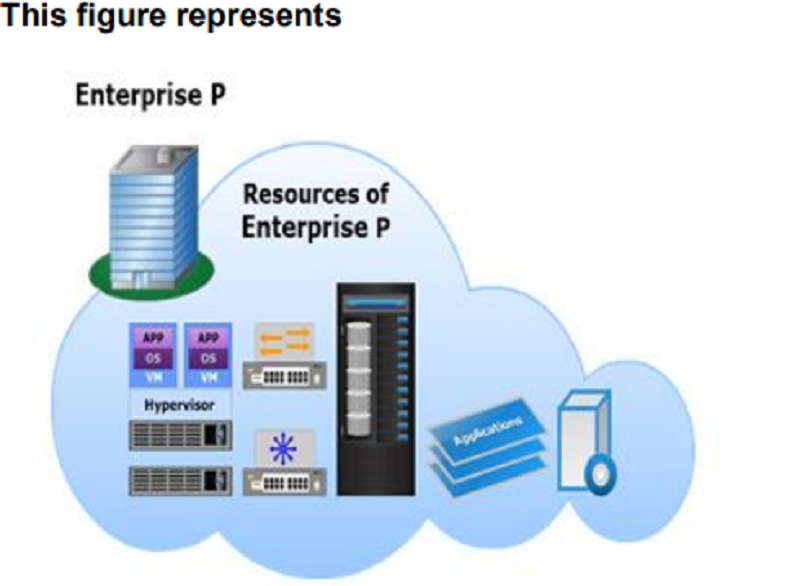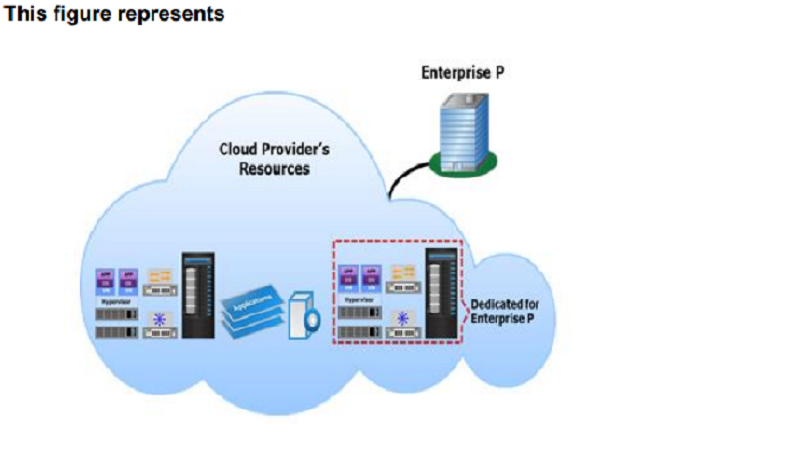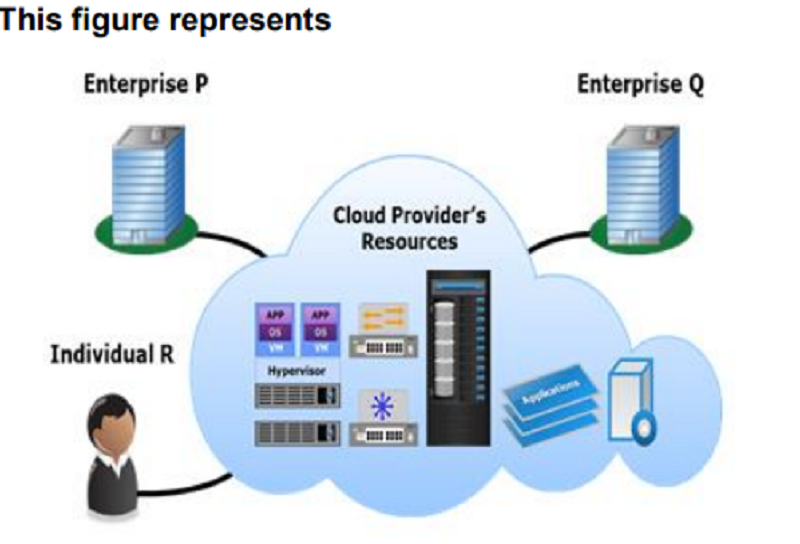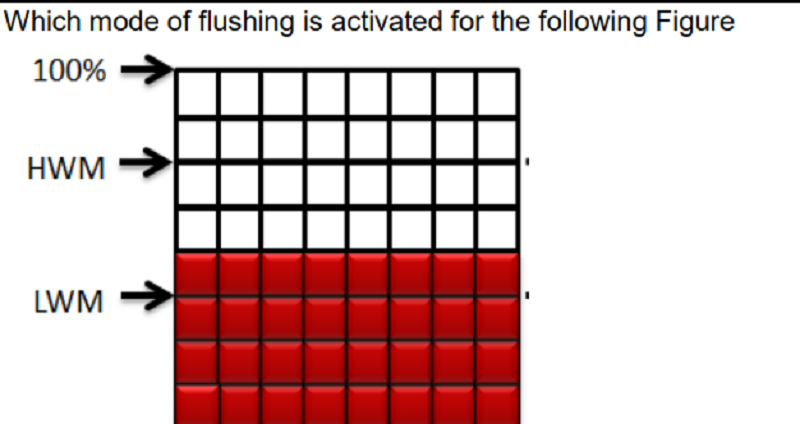DS-623 cloud computing

Cloud Computing Knowledge Quiz
Test your knowledge on cloud computing with this comprehensive quiz designed for tech enthusiasts and professionals alike. Covering key concepts from data transfer rates to cloud deployment models, this quiz will challenge your understanding of essential cloud computing principles.
- 113 Thought-provoking Questions
- Multiple Choice Format
- Assess Your Cloud Computing Knowledge
Data Transfer rate using Parallel Small computer system interface (SCSI)
Up to 100Mb/s
Up to 100MB/s
Up to 640 MB/s
Up to 16 Gb/s
Up to 6 Gb/s
Data Transfer rate using Serial Attached SCSI (SAS)
Up to 100Mb/s
Up to 100MB/s
Up to 640 MB/s
Up to 16 Gb/s
Up to 6 Gb/s
Data Transfer rate using Serial Advanced Technology Attachment (SATA)
Up to 100Mb/s
Up to 100MB/s
Up to 640 MB/s
Up to 16 Gb/s
Up to 6 Gb/s
Which key requirement of the data center infrastructure addresses the concern of data on storage systems being accessible 24x7 ?
Performance
Scalability
Availability
Manageability
Which factors contribute to the overall service time of a mechenical disk ?
Disk buffer time, full stroke, and rotation latency
Internal transfer rate, external transfer rate, and buffer time
Full stroke, average seek time, and track-to-track seek time
Average seek time, rotational latency, and data transfer rate
Data Transfer rate using Fibre Channel (FC)
Up to 100Mb/s
Up to 100MB/s
Up to 640 MB/s
Up to 16 Gb/s
Up to 6 Gb/s

Public Cloud
On-premise Private Cloud
Community Cloud
Hybrid Cloud
Externally-hosted Private Cloud

Public Cloud
On-premise Community Cloud
Externally-hosted Private Cloud
Hybrid Cloud

Public Cloud
On-premise Private Cloud
Community Cloud
Hybrid Cloud
Externally-hosted Private Cloud

Public Cloud
Private Cloud
Community Cloud
Hybrid Cloud
In which Cloud deployment model would an organization see operational expenditures grow in proportion to capital expenditures?
On-premise Private Cloud
External Private Cloud
Public Cloud
Hybrid Cloud
Which cloud service model allows the user to run any operating system and application ?
Platform-as-a-Service
Infrastructure-as-a-Service
Software-as-a-Service
IT-as-a-Service
Which cloud service model is most appropriate for application development ?
Infrastructure-as-a-Service
Platform-as-a-Service
Software-as-a-Service
IT-as-a-Service

Infrastructure-as-a-Service
Platform-as-a-Service
Software-as-a-Service
IT-as-a-Service

Externally-hosted community cloud
On-premise private cloud
On-premise community cloud
Hybrid cloud bursting

Infrastructure as a Service
Software as a Service
Platform as a Service
Desktop as a Service
Which Cloud deployment model(s) is considered suitable for most start-up organizations?
Private Cloud only
Hybrid Cloud only
Public Cloud
Both Private and Hybrid Cloud
Which cloud deployment model is typically preferred by an individual who is least concerned about the security or availability risks and most concerned about reducing cost?
Public
Private
Community
Hybrid
�……….specifies the entities such as compute systems, networking devices, and storage devices
Physical Layer
Virtual Layer
Control Layer
Service Orchestration
Service Layer
Functions of …………….Abstracts physical resources and makes them appear as virtual resources
Physical Layer
Virtual Layer
Control Layer
Service Orchestration
Service Layer
�…….Deployed on the physical layer only
Physical Layer
Virtual Layer
Control Layer
Service Orchestration
Service Layer

Performance
Availability
Scalability
Data integrity
�……………….Deployed either on the virtual layer or the physical layer
Physical Layer
Virtual Layer
Control Layer
Service Orchestration
Service Layer

Idle
High watermark
Forced
Low watermark
Specifies entities that operate at …………… layer: Virtualization software, Resource pools, and Virtual resources
Physical Layer
Virtual Layer
Control Layer
Service Orchestration
Service Layer

RAID 0
RAID 1
Nested
RAID 3
Which mechanism protects against cache failure
Mirroring
Vaulting
Watermarking
Tiering

RAID 5
RAID 0
RAID 1
Nested
Functions of ……………….Enables resource configuration and resource pool configuration and Enables resource provisioning
Physical Layer
Virtual Layer
Control Layer
Service Orchestration
Service Layer

N_port
E_port
F_port
G_port

Resource provisioning
Service catalog management
Web portal management
Workflow creation

Zone
VLAN
ISL
Mask

RAID 0 and RAID 6
RAID 3 and RAID 5
RAID 1 and Nested
RAID 5 and Nested

N_port
E_port
F_port
G_port

Consumers are billed based on resource usage.
Services are provisioned based on their demand.
Metering services are created when required from the resource pools
Metering services can scale up and down based on resource usage

Monitoring
Alerting
Reporting
Provisioning

Consumers are billed based on their consumption of resources
Cloud services are provisioned based on consumer demand
Cloud services are created as required from resource pools
Consumers access cloud services from anywhere over a network
Which cloud computing characteristic enables Capabilities can be Speedly and scalability provisioned
Broad network access
Measured service
Rapid elasticity
On-demand self-service
Which is a benefit of server clustering
High CPU utilization
High availability
High memory utilization
High security
Which is an essential characteristic of the Cloud?
Optimized utilization of Resources
Resource reservation
Resource planning
Resource provision
Which cloud computing characteristic enables consumers to get computing resources without human intervention?
Broad network access
Measured service
Rapid elasticity
On-demand self-service
Which is an essential characteristic of the Cloud?
Resource utilization
Resource reservation
Resource planning
Resource pooling
Which is a key step in building a Cloud Infrastructure?
Centralize services and resources
Automate resource classification
Customize services and resources
Automate service provisioning
Which cloud characteristic enables consumers to use cloud services from a wide range of client platforms?
On-demand self service
Resource pooling
Broad network access
Rapid elasticity
Organizations must identify which deployment option is appropriate for them . in ………………………, deployment option is typically used when infrastructure does not exist. An organization has to build the cloud infrastructure starting from the physical layer.
Greenfield
Brownfield
Integrating best-of-breed cloud infrastructure components
Cloud-ready converged infrastructure

Brownfield deployment
Greenfield deployment
Cloud-ready converged infrastructure
Best-of-breed cloud infrastructure components

Resource pool
Operating environment
Control software
Orchestration software
This layer's key function is to execute the request generated, such as storing data on the storage devices, communicating among compute systems, executing programs on compute systems, creating a backup copy of data, or executing security policy to block an unauthorized activity.
Physical Layer
Virtual Layer
Control Layer
Service Orchestration
Service Layer
�……….specifies the entities such as compute systems, networking devices, and storage devices.
Physical Layer
Virtual Layer
Control Layer
Service Orchestration
Service Layer
Functions of …………….Abstracts physical resources and makes them appear as virtual resources
Physical Layer
Virtual Layer
Control Layer
Service Orchestration
Service Layer
Functions of ……………. Enables multitenant environment, thereby improving utilization
Physical Layer
Virtual Layer
Control Layer
Service Orchestration
Service Layer
Functions of …………….. Executes the requests generated by the control layer
Physical Layer
Virtual Layer
Control Layer
Service Orchestration
Service Layer
�…….Deployed on the physical layer only
Physical Layer
Virtual Layer
Control Layer
Service Orchestration
Service Layer
Specifies entities that operate at …………… layer: Virtualization software, Resource pools, and Virtual Resources
Physical Layer
Virtual Layer
Control Layer
Service Orchestration
Service Layer

Execute the requests generated by the virtualization and control layers
Present the information in the service catalog to consumers
Abstract the physical resources and make them appear as virtual resources
Perform resource configuration and resource pool configuration
Which component(s) of a cloud infrastructure framework helps automate the creation and delivery of computing resources to the consumers?
Service management tools
Physical infrastructure
Virtual infrastructure
Application and platform software
Functions of…………………….. Collaborates with the virtualization software and enables Resource pooling and creating virtual resources, Dynamic allocation of resources, and Optimizing utilization of resources
Physical Layer
Virtual Layer
Control Layer
Service Orchestration
Service Layer
Functions of ………………..Provides workflows for executing automated tasks
Physical Layer
Virtual Layer
Control Layer
Service Orchestration
Service Layer
Consumers interact and consume cloud resources via ………….
Physical Layer
Virtual Layer
Control Layer
Service Orchestration
Service Layer
Specifies the entities that operate at…………… such as the Service Catalog
Physical Layer
Virtual Layer
Control Layer
Service Orchestration
Service Layer
Functions of ……………. Stores information about cloud services in the service catalog and presents them to the consumers
Physical Layer
Virtual Layer
Control Layer
Service Orchestration
Service Layer
Specifies the entities that operate at ……………..such as Self-service portal
Physical Layer
Virtual Layer
Control Layer
Service Orchestration
Service Layer
Which is the benefit of RAID?
Ensures data integrity in a RAID set
Prevents disk failure in a RAID set
Improves storage system performance
Simplifies distribution of parity across mirrored disks

Data corruption
Data backup
Data loss
Data security

RAID 0
RAID 1
Nested
RAID 3

RAID 0 and RAID 6
RAID 3 and RAID 5
RAID 1 and Nested
RAID 5 and Nested

Front-end
Cache
LUN
Back-end

RAID 1
RAID 3
RAID 5
RAID 6

RAID 1
RAID 3
RAID 5
RAID 0

RAID 1
RAID 3
RAID 5
RAID 6

RAID 1
RAID 3
RAID 5
RAID 6

Front-end controller
Back-end controller
Cache
Storage network

Mirroring
Vaulting
Watermarking
Tiering

Write-through cache
Write-back cache
Low watermark cache
High watermark cache

Write-through cache
Write-back cache
Low watermark cache
High watermark cache

Read Miss
Read Hit
Read through Cahe
Read Back cache

Read Miss
Read Hit
Read through Cahe
Read Back cache

Idle flushing
High watermark flushing
Forced flushing
Thin LUN

Idle flushing
High watermark flushing
Forced flushing
Thin LUN

Idle flushing
High watermark flushing
Forced flushing
Thin LUN

Idle Flushing
Forced Flushing
Thick LUN
Thin LUN

Idle Flushing
Forced Flushing
Thick LUN
Thin LUN

Area ID
Port ID
Domain ID
WWN

Fabric
Fibre Channel
Loop
Trunking

FCP
ISCSI
FCIP
FCOE

FCP
ISCSI
FCIP
FCOE

FCP
ISCSI
FCIP
FCOE

FCP
ISCSI
FCIP
FCOE

Full Mesh Topology
Point-to-Point
Fibre Channel Arbitrated Loop (FCAL)
Fibre Channel Switched Fabric (FC-SW
Core Edge Topology

Full Mesh Topology
Point-to-Point
Fibre Channel Arbitrated Loop (FCAL)
Fibre Channel Switched Fabric (FCSW
Core Edge Topology

Full Mesh Topology
Point-to-Point
Fibre Channel Arbitrated Loop (FCAL)
Fibre Channel Switched Fabric (FCSW
Core Edge Topology

F Port
N Port
E Port
None of above

F Port
N Port
E Port
None of above

F Port
N Port
E Port
None of above

Core Edge Topology
Full Mesh Topology
Partial Mesh Topology
Native iSCSI

Core Edge Topology
Full Mesh Topology
Partial Mesh Topology
Native iSCSI

Core Edge Topology
Full Mesh Topology
Partial Mesh Topology
Native iSCSI

Core Edge Topology
Full Mesh Topology
Partial Mesh Topology
Native iSCSI

Core Edge Topology
Bridge iSCSI
Partial Mesh Topology
Native iSCSI

64 KB
128 KB
256 KB
320 KB
What is the stripe size of a five-disk RAID 5 set with a strip size of 32 KB?
32 KB
64 KB
128 KB
160 KB
What is the stripe size of a five-disk RAID 0 set with a strip size of 64 KB?
64
128
192
256
320
An application specifies a requirement of 200 GB to host a database and other files. It also specifies that the storage environment should support 5,000 IOPS during its peak workloads. The disks available for configuration provide 66 GB of usable capacity, and the manufacturer specifies that they can support a maximum of 140 IOPS. The application is response time sensitive, and disk utilization beyond 60 percent does not meet the response time requirements. Compute the minimum number of disks that should be configured to meet the requirements of the application
4
60
64
54

50
60
40
10

10
50
60
40

272
17
16
0
Thirteen switches with 12 ports are connected in a full mesh topology. How many ports are available for host and storage connectivity?
156
13
12
0

300
750
900
1050

150 G
1650 G
1500
1850

150
1650
1500
1850
Determine the maximum IOPS that could be performed with this disk for the application. The average I/O size of an application is 64 KB. The following specifications are available from the disk manufacturer: average seeks time = 5 ms, 7,200 RPM, and transfer rate = 40 MB/s.
10.767 IOPS
93 IOPS
65 IOPS
100

15ms
10ms
3ms
5ms

100%
96%
92%
88%
{"name":"DS-623 cloud computing", "url":"https://www.quiz-maker.com/QPREVIEW","txt":"Test your knowledge on cloud computing with this comprehensive quiz designed for tech enthusiasts and professionals alike. Covering key concepts from data transfer rates to cloud deployment models, this quiz will challenge your understanding of essential cloud computing principles.113 Thought-provoking QuestionsMultiple Choice FormatAssess Your Cloud Computing Knowledge","img":"https:/images/course5.png"}
More Quizzes
Cloud Computing Quiz - Careers Fair
11634
Azure Fundamentals Quiz - Jio
10514
Conectores en español
630
Sort Sieve Triage
15815
Biodiversity Knowledge - Free Online
201017478
Likeable Person Test - Free, Instant Results
201019385
Which Medical Specialty Should I Choose? Free
201017544
CG PMT Exam Practice - Free Online
201021621
What Minecraft Character Are You? Free Personality
201016615
Which Hunger Games Character Are You? Take the
201017155
Roman Architecture: Arches, Keystone & Lintels
201019211
Wings of Fire Tribe - Find Your Dragon Match
201017093